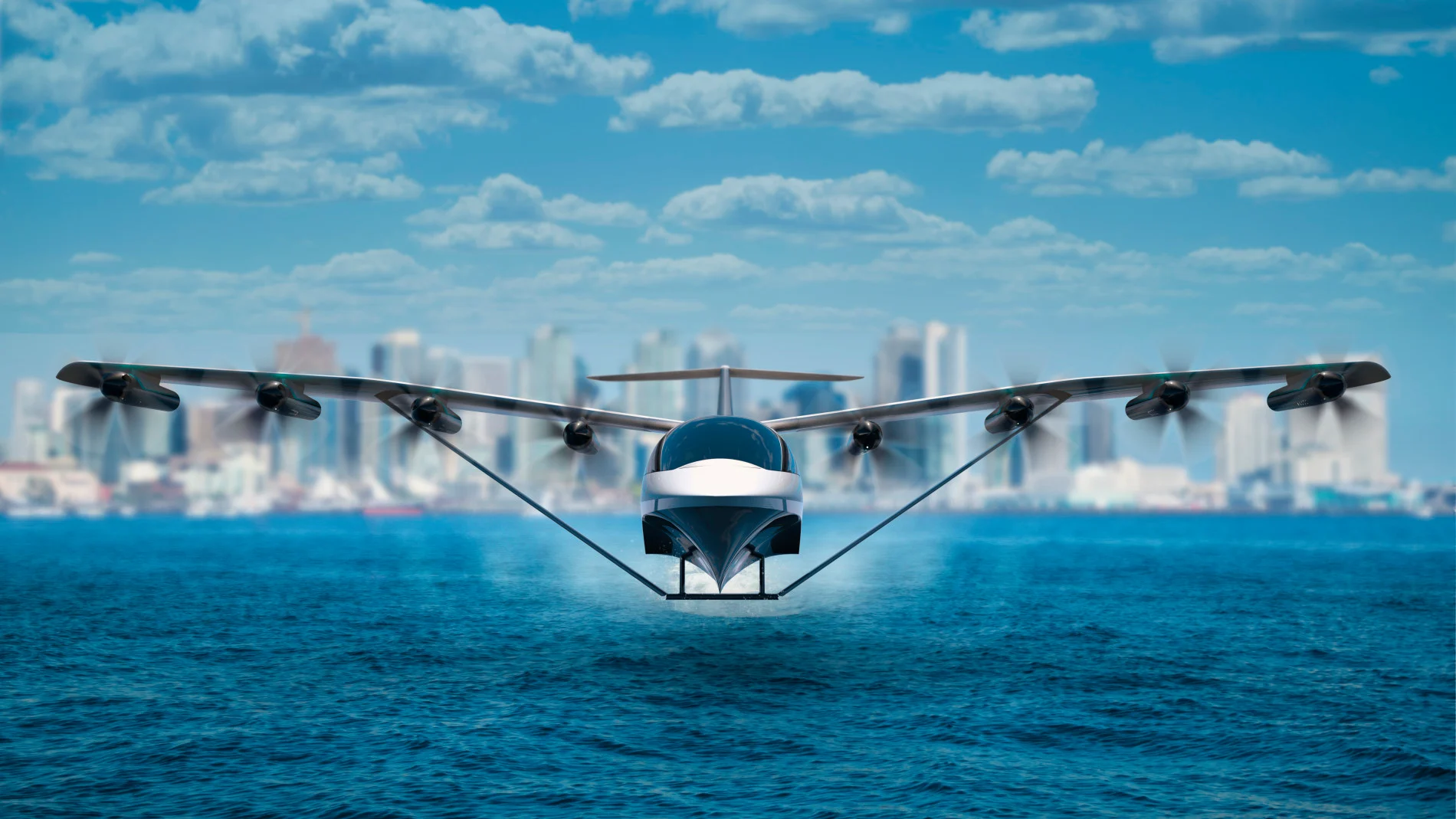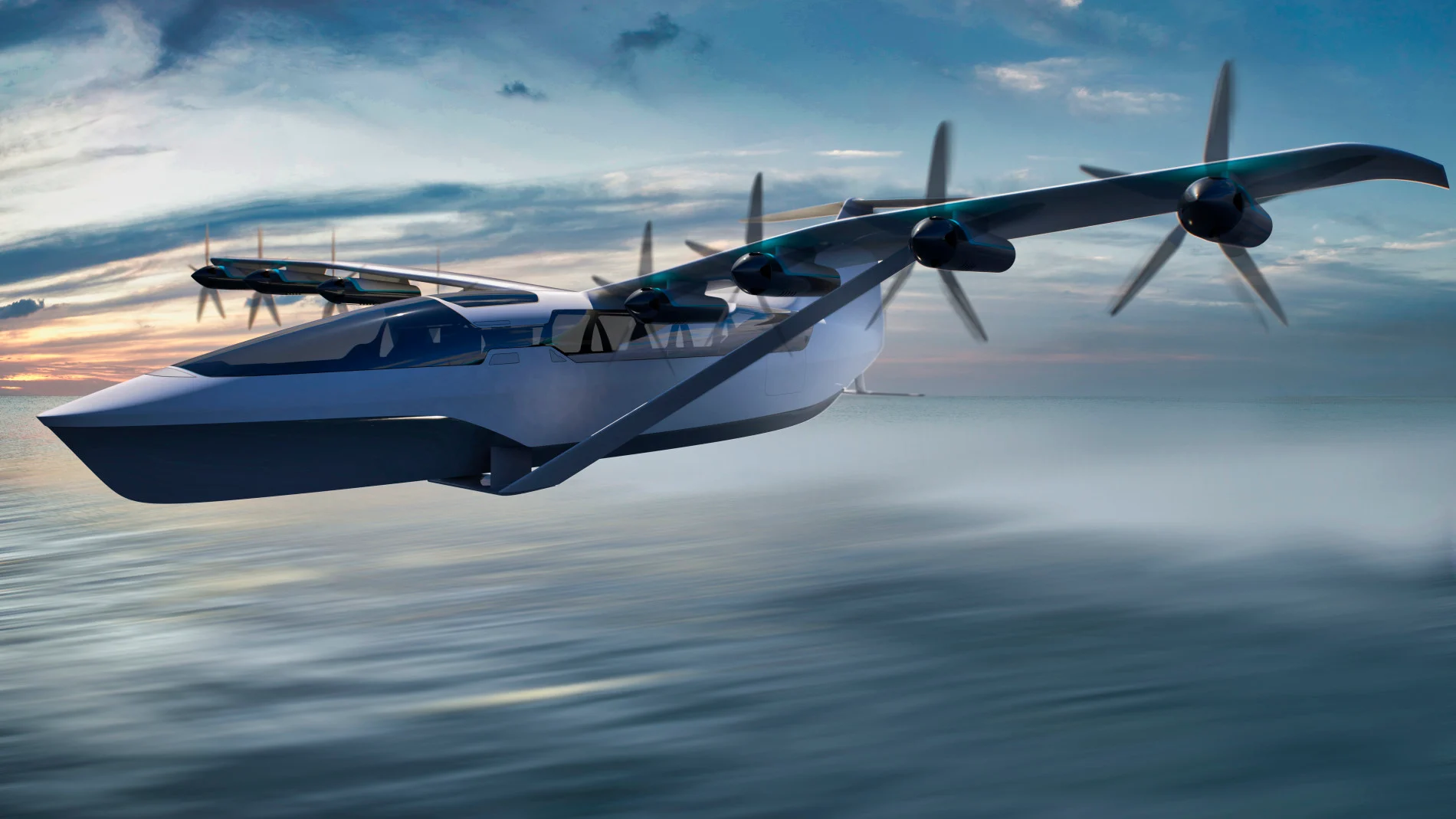
Electric flying ferries set to transport passengers by 2025
Regional transportation between coastal cities could be possible with a new zero-emission seaglider
A new mode of transportation will soon be offered in coastal cities in the U.S. thanks to the latest developments from Regent, a start-up company based in Boston.
The vehicle is an electric seaglider that initially travels out of harbours at 30–70 km/h before launching into flight once it hits open waters. The seaglider can travel up to 290 km/h while hovering 1.5–9 m above the water.
“Similar to a hovercraft, seagliders fly on a dynamic air cushion created by the pressurized air between the wings and the water. The aerodynamic advantage of this so-called “ground effect,” combined with operational efficiencies of always being a few feet away from a safe landing, give seagliders double the range of an electric aircraft,” the company’s press release states.

The electric seaglider can reach a top speed of 290 km/h. (Regent/Submitted)
Road traffic is a major source of greenhouse gases in urban areas and has far-reaching impacts on the surrounding communities and environment. In addition to vehicle emissions that continue to be problematic, high volumes of vehicles on our highways exacerbate pollutants through stirring up road dust. Consequently, this has impacts on public health and local vegetation.
The company says that the high speed capability of their zero-emission seaglider will make their technology attractive to those seeking transportation in highly congested coastal areas, such as Boston, New York City, Los Angeles, and San Francisco.

An overhead view of the seaglider. (Regent/Submitted)
The seagliders will capture the perks of traditional modes of transportation — they are expected to be half the cost of aircraft and six times faster than ferries with less noise and zero emissions.
A prototype of the electric seaglider will be completed by the end of 2021 with a wingspan of approximately 4.5 m and a weight of 181 kg. The first commercial passengers will be able to travel on one of the electric seagliders by 2025, the company states in their press release.
Thumbnail credit: Regent











